Piriformis syndrome, also known as deep gluteal syndrome, can make it difficult to get a good night’s sleep. The sciatic nerve pain and discomfort can interfere with your ability to fall asleep and stay asleep throughout the night. Fortunately, there are several things you can do to make it easier to sleep with piriformis syndrome.
Why Does Your Piriformis Muscle Hurt When You Sleep?
One potential culprit for your piriformis muscle pain is prolonged sitting. Think about it – during the day, we spend countless hours confined to chairs, which can lead to muscle stiffness and tightness. Another possible cause is muscle imbalances caused by poor posture or unusual running habits. So, if you find yourself slouched on the couch all day or hobbling weirdly during your morning jog, you might want to rethink your habits.
For those with piriformis syndrome, lying on the affected side can often exacerbate the pain due to increased pressure on the inflamed the buttock muscles. Attempting to sleep on the back may also be uncomfortable, as the pressure on the lower back and hips can aggravate symptoms. These challenges can result in disrupted sleep patterns, difficulty falling asleep, and waking up throughout the night due to discomfort.
Furthermore, individuals with piriformis syndrome may also experience muscle stiffness and limited range of motion. This can lead to a feeling of tightness and tension in the affected area, making it challenging to find a position that provides relief.

Best Sleeping Position for Piriformis Syndrome
Find a comfortable sleeping position
Experiment with different sleeping positions to find the most comfortable one for you. Sleeping on your back with a pillow under your knees can help reduce pressure on your buttock muscle.
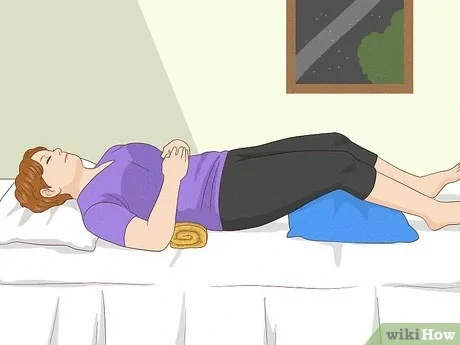
One side sleeping with a pillow between your legs can also be helpful, as it can align your hips and spine properly.

Use a supportive mattress and pillows
Make sure that your mattress and pillows are supportive and provide adequate cushioning for your body. A medium-firm mattress can help maintain proper alignment and prevent pressure points.
Sleeping on the floor can temporarily stop piriformis muscle pain at night when you haven’t found a suitable mattress.
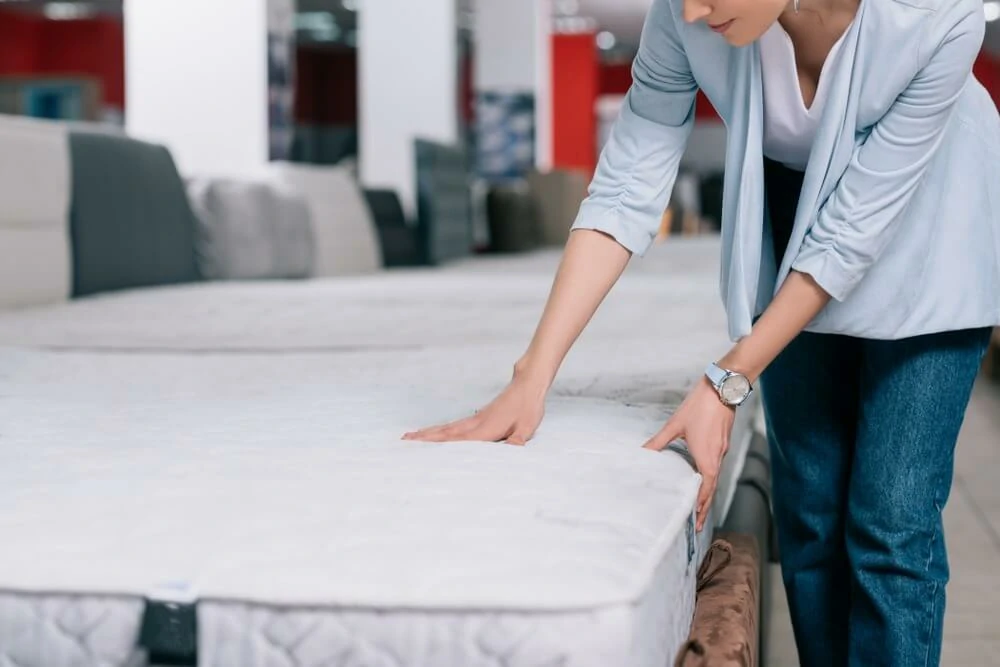
These are not enough; you need to be more proactive in seeking solutions.
How Do You Stop Piriformis Pain at Night
Finding ways to relax your buttock muscles before bedtime can have a significant impact on your sleep quality and overall wellbeing.
Stretch before bed
Doing some gentle stretches before bed can help relax your muscles and ease tension in your piriformis muscle. Consider doing stretches such as the seated Figure-4 stretch or the lying Pigeon pose.
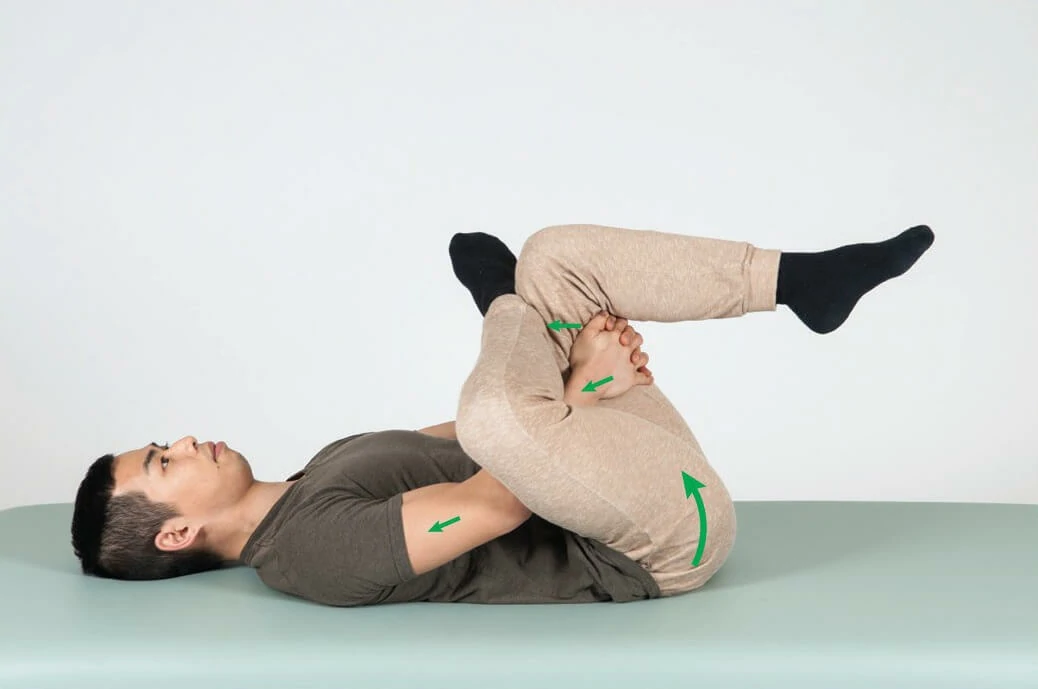
Massage therapy
Incorporating massage into your bedtime routine can also help to relax your butt muscles and promote better sleep. Gentle massage techniques like using a Acu-hump on the affected area can help to reduce muscle tension and help you unwind before bed.

Acu-hump: 30-day return policy. No risk for you.
You can also consider getting a professional massage from a licensed massage therapist. A skilled therapist can use various techniques to fix on your piriformis muscle and help to fix sciatic nerve pain and buttock muscle tension. Plus, the soothing effects of massage can also help you drift off to sleep more comfortably.
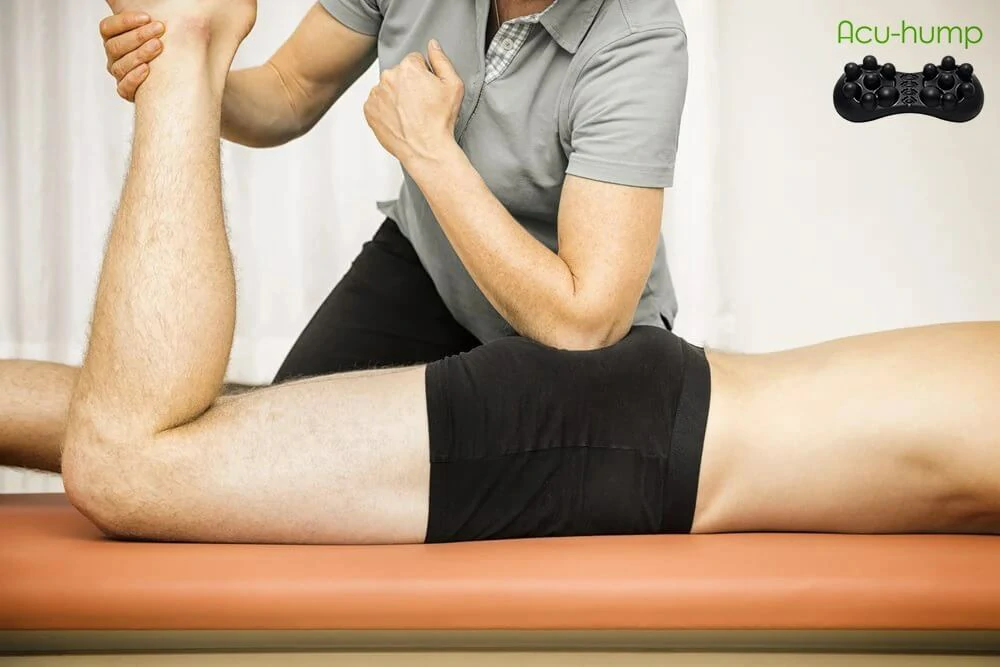
The Acu-hump is designed to target and release muscle knots in the buttocks through self-massage.
This piriformis release tool features 14 massage bumps that you can use to apply pressure to the affected muscle. By leaning on the tool over the muscle, you can help break up adhesions and knots that may be contributing to pain and discomfort in the area.
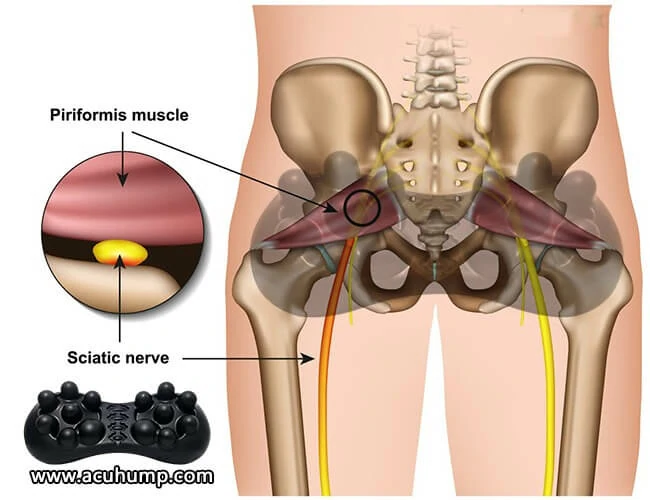
Acu-hump® Relieve Piriformis Pain
Using the Acu-hump regularly can help to improve range of motion and flexibility in the piriformis muscle, reducing the likelihood of future flare-ups. Plus, it’s a convenient way to get the benefits of massage therapy from the comfort of your own home.
Aside from using the Acu-hump, incorporating stretching exercises into your routine can help to further alleviate piriformis syndrome pain. By combining the Acu-hump therapy with stretching, you can maximize the benefits of both treatments.

Supine Figure-Four Stretch
Lie on your back with your knees bent and feet flat on the ground. Cross your affected ankle over your opposite knee and lift your unaffected leg off the ground. Hold onto the back of your thigh and gently pull your legs towards your chest until you feel a stretch in your buttock and hip. Hold the stretch for 30s, then release and repeat on the other side.
By combining the use of the Acu-hump with stretching exercises, you can help to release tension and tightness in your piriformis muscle, reducing the likelihood of future flare-ups.
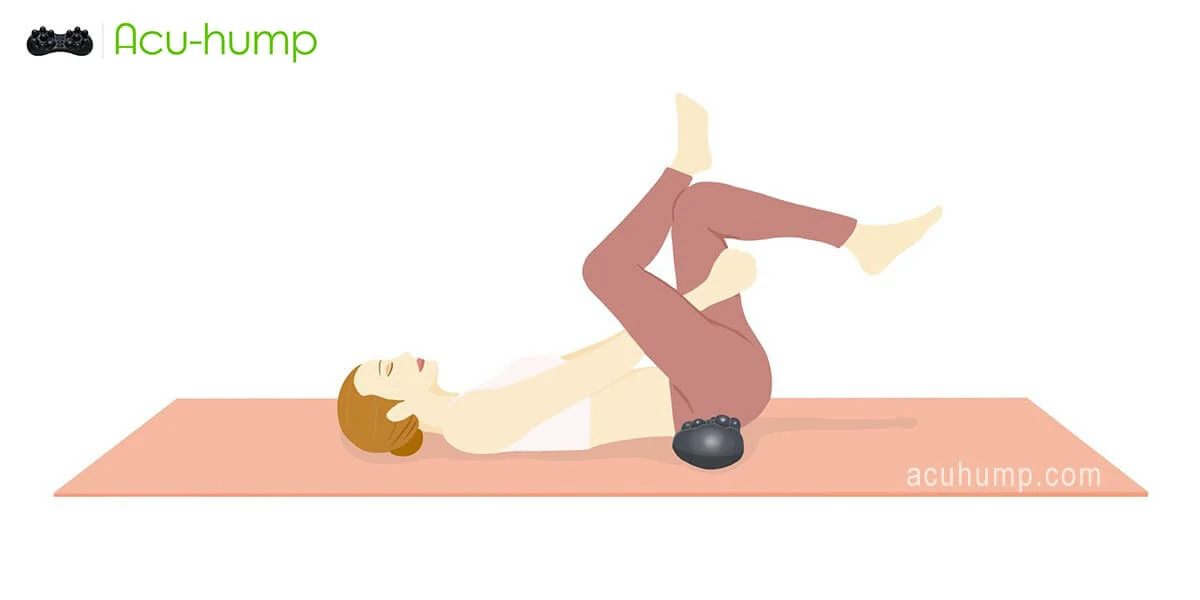
Acu-hump® Relieve Piriformis Pain
Use heat therapy
Applying heat to your piriformis muscle before bed can help reduce pain and stiffness. You can use a warm compress, a heating pad, or take a warm bath before going to bed.
Try over-the-counter pain relief
Over-the-counter pain relievers such as ibuprofen or acetaminophen can help alleviate pain and discomfort associated with piriformis syndrome. However, it’s essential to consult with your doctor before taking any new medication.
Consider physical therapy
Physical therapy can help relieve piriformis syndrome symptoms over time. Your therapist can develop a customized exercise plan to stretch and strengthen your piriformis muscles.
Getting quality sleep with piriformis syndrome can be a challenge. However, by incorporating the above tips into your routine, you can make it easier to fall asleep, stay asleep, and wake up feeling refreshed and rested. If discomfort does not go away, it is advisable to consult a doctor for professional treatment.
Acu-hump: 30-day return policy. No risk for you.
